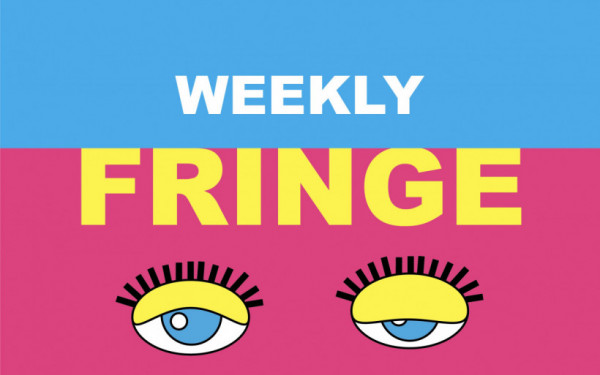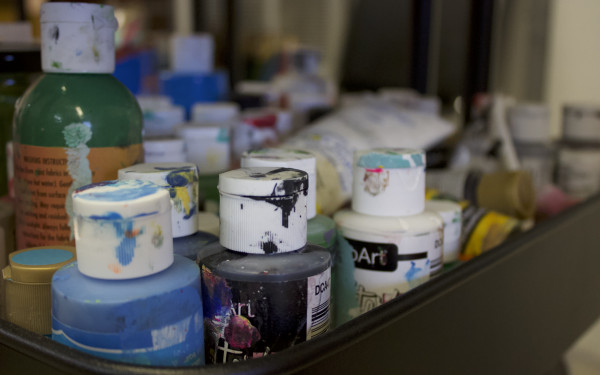Discover Different Forms of Art Therapy and Where To Find Them in Montreal
Healing Creation, Through Dance, Art, and Drama
Being a university student in Montreal can be a terribly stressful ordeal. Between taking classes, studying for exams, having full-time or part-time jobs, maintaining a social life, and experiencing this city for what it is, it can be easy to disregard the importance of balancing our mental health.
When having burnouts, breakdowns, or feelings of anxiety or depression, we are often encouraged to seek out psychological services, but verbal counselling or psychotherapy may not be the right avenue for everyone.
If you’re looking for a type of therapy that is a little more playful, imaginative, or downright fun, there are a multitude of options for you right here in Montreal. You can explore your inner child through the use of drama therapy, express yourself with your whole body with dance and movement therapy, explore the inner critic or the superego through creation with art therapy, and foster change within yourself by making sound with music therapy. If you’re fed up with verbal therapy services, you might want to check these out.
ART THERAPY
Dana Schnitzer, an art therapist and psychotherapist, graduated from Concordia’s art therapy master’s program in 2002. For the last 13 years, Schnitzer has been practicing art therapy with children and adults with an array of mental health issues, specializing in anxiety, depression, and ADHD.
2_900_600_90.jpg)
“Art therapy is a way to help people explore their inner world and their unconscious mind,” Schnitzer said. “It can bypass the usual defense mechanisms that exist in language. So one can be very surprised by what one finds.”
According to Schnitzer, the type of art her clients create in their sessions will be different depending on what they’d like to work on. It begins with a conversation about what the problem is, and then depending on the problem, the session will either be directed by the client or by Schnitzer. Different artistic materials will be available for the client to use.
“It could be drawing, painting, sculpture or collage,” Schnitzer said. “It really depends on what the person’s problems are and what they want to work on. A painting would not be recommended for certain people with certain problems, and it would be very much recommended for others.”
3_900_536_90.jpg)
Schnitzer explained that by giving the problem a material form, whether it be the inner critic or the superego, it’s easier to identify and understand the problem from another perspective.
Children can also benefit from art therapy practices. According to Schnitzer, because most children don’t have the mastery of language yet, they can express themselves more profoundly with art materials than they can verbally. It allows them to create a safe space in which they can explore their feelings indirectly. Making art can also foster a better alliance between a therapist and a child.
Schnitzer also practices psychotherapy, but said that the most profound change she has witnessed within her clients over the last thirteen years has occurred when using art therapy techniques.
4_900_587_90.jpg)
“The art therapy is what goes the deepest, is the most profound, the most memorable, and can affect the most change in the life of a person,” Schnitzer said. “When they manipulate the materials, there’s an alchemy, a transformation that happens. Symbols and archetypes are very powerful messages to the unconscious and can be very surprising, and they can be used to really deepen the understanding of the self and promote healing.”
DRAMA THERAPY
The North American Drama Association is a non-profit that was founded in 1979 by a group of professionals who used therapy techniques related to the practice and art of drama.
The NADTA’s president is Jason Butler, a drama therapist with a PhD in inter-disciplinary studies from Concordia University. The NADTA recognizes a drama therapist as having completed at least 1,000 hours of professional practice, having a masters degree in drama therapy or another related field, said Butler, and they are also often psychotherapists, depending on the state or province they work in.
“We have drama therapists that are working with just about any conceivable population, be it small children, adolescents, adults, people with psychiatric disorders, or developmental disabilities,” Butler said.
The act of drama therapy is very diverse. It can involve writing and producing plays, acting out improvisational scenarios, or making use of puppets or masks.
“I was running a program in New York City for many years for the homeless and mentally ill,” Butler explained. “Some of the drama therapy we did would be creating plays, where the participants wrote their own plays, sometimes about their life experiences. But the therapeutic process of writing and producing and putting on those plays for the community was drama therapy in one sense.”
Butler explained that drama therapy is especially useful for certain populations that are unable to express themselves by sitting and talking about their issues with a therapist. Drama therapy has the ability to circumvent some people’s defense mechanisms, like children with developmental disabilities. It uses the whole body instead of just language.
“Kids often don’t have a great way of talking about their negative experiences, or their traumas,” he said. “Drama therapy allows the child and the therapist to engage at a level that they wouldn’t be able to.”
Studies on drama therapy have shown that because there is a more playful aspect to the therapy, clients are more likely to stay with the therapy in the long term, Butler explained.
“We actually have clients up on their feet doing role plays, so they have an embodied experience of the change they’re working towards.”
In 2016, Butler was an assistant professor of creative arts therapies at Concordia University, where he taught research in drama therapy and was a drama therapy practicum supervisor. According to Butler, the master’s degree in drama therapy at Concordia is a 60 credit program that requires 800 hours of hands-on work experience with two different populations. In their first year, students are often placed in senior centers or work with people with developmental disabilities.
In the second year, students can choose what populations they want to work with, which are often in schools or hospitals in Montreal.
DANCE THERAPY
In 2013, Montreal’s dance institute Les Grands Ballets started a program called the National Centre for Dance Therapy. The NCDT facilitates the training of dance therapy, and has led world class research on the benefits of dance therapy for children, adults and seniors. It places dance therapists in hospitals, schools and prisons where therapists have one-on-one sessions with those who are seeking dance therapy.
Christian Sénéchal, the NCDT’s director, said that when the NCDT first looked into community involvement in Montreal, they found that there weren’t any training centers for dance therapists in the city. After researching the potential for dance therapists to be positioned in institutions like hospitals, prisons and schools, the NCDT decided they would start their own training program for dance therapists, where the program has since attracted people from around the world.
According to Sénéchal, “The use of dance and movement has a complementary tool for the health, for rehab, but also for a psychological perspective and a physical perspective.”
The NCDT offers business-to-business services, which means that they do not offer one on one dance therapy sessions, but instead coordinate programs with institutions that are in need of dance therapists.
Sénéchal said that because dance therapy is more playful than verbal forms of therapy, it can create fantastic results for children and seniors. In a study the NCDT organized with the Geriatric Institute of Montreal and Concordia’s PERFORM center, a gym and research facility located on the Loyola campus, the NCDT had seniors doing regular exercise and dance therapy, and found that the seniors’ levels of stress were substantially lower when dancing.
“It’s easy to understand. Just think about your grandfather or grandmother on a treadmill for 12 weeks, compared to having a dance therapy group where you’re sharing memories and singing and dancing. It makes sense.”
Sénéchal believes that there’s a bright future for dance therapy in Montreal. “We have had dance therapists in Montreal for decades, but I think there is a new light now. In the last five years, we have more and more researchers from other fields who are interested in these effects.”
EXPRESSION LASALLE
Expression Lasalle is a non-profit community mental health centre located in southwest Montreal. It offers art therapy, music therapy, and drama therapy to its clients, free of charge —it’s the only therapy centre in Montreal that does.
Expression Lasalle was founded in 1990. According to the centre’s director, Julia Olivier, the Quebec government deinstitutionalized hospitals throughout the province in the 1970s, which heavily affected how many hospital beds were available to patients in psychiatric wards, and forced people with mental health issues onto the streets.
In the second wave of institutionalization in the late 1980s and early 1990s, the Quebec government began to invest in community resources, one of which was Expression Lasalle. The person hired to develop Expression Lasalle in 1990 was an art therapist, and the centre has since had a continuity of art therapists running it.
Other than an initial membership fee of $15, the services offered at Expression Lasalle are completely free.
“Most of the people we see are people who have mental illness, so they can’t work or they’re working part-time and they’re living below the poverty line,” Olivier said. “In principle, we believe that therapy is not just for the rich. People who are socially and mentally disadvantaged should also have access to quality therapy.”
Because Expression Lasalle is the only one of its kind in Montreal, they have waiting lists for up to a year for most of their services.
The centre mainly offers group therapy sessions that happen once a week for two hours a week, and last from six to nine months. According to Olivier, most of the groups start with six or seven members, which creates an intimate and trusting atmosphere.
“It’s a closed and confidential setting where people can form a trusting space, where they can come deal with their emotional and psychological difficulties.”
“It’s a closed and confidential setting where people can form a trusting space, where they can come deal with their emotional and psychological difficulties,” said Julia Olivier.
Expression Lasalle also offers therapy on the theme of sexual abuse. When the centre first opened its doors, they had people who sought therapy for experiences related to sexual violence or rape, Olivier said, but felt uncomfortable working through their traumas in a group setting that wasn’t comprised of others who shared similar experiences.
Over the years, Expression Lasalle developed a program specifically offered to people looking to work through their sexual violence traumas, which is run by a therapist who has a background and understanding on the subject.
“It is a specific service that we have developed knowing that it is a difficult topic to address, and we want to create an environment where people feel safe,” Olivier said. “Knowing that other people in that group are all having that experience, we notice that it helps rather than to just be in other groups. It’s a slower approach and its more structured and there are exercises that foster understanding.”
The centre is run by two full-time administrators and five part-time therapists. Then, each fall, the centre receives between six and eight students who are studying to become art therapists from Concordia, McGill, Université de Montréal and Université du Québec à Montréal. The students are provided hands on art therapy training, and in turn they provide their own services to the members of the centre.
STRUGGLE FOR RECOGNITION
Creative therapies haven’t always been so prevalent and accessible in Quebec, and they continue to struggle to gain acceptance and recognition within the Ordre des Psychologues.
Bill 21, which was adopted by the provincial government in 2009, aimed at creating a stricter policy concerning what the Ordre des Psychologues considers professional psychologists, social workers, marriage, and family therapists, vocational guidance counsellors and psycho-educators. This ultimately made it harder for creative art therapists, drama therapists, music therapists, and dance and movement therapists to become part of the Ordre des Psychologues.
In response to that, “a number of devoted creative arts therapists joined forces to advocate for the cause of arts therapists at risk of facing professional prejudice due to [the] pending adoption of Bill 21,” said Catherine-Emmanuelle Drapeau, who is the chair of the governmental affairs and regulations committee of the Association des arts-thérapeutes du Québec.
They formed OPTA, the committee for an Ordre Professionnel pour les Thérapeutes par les Arts, which advocates for the recognition of the profession of creative art modalities. There are currently two graduate level training art therapy programs offered in Quebec that are being submitted for evaluation to the Ordre des Psychologues du Québec, Drapeau said.

_900_600_90.jpg)



